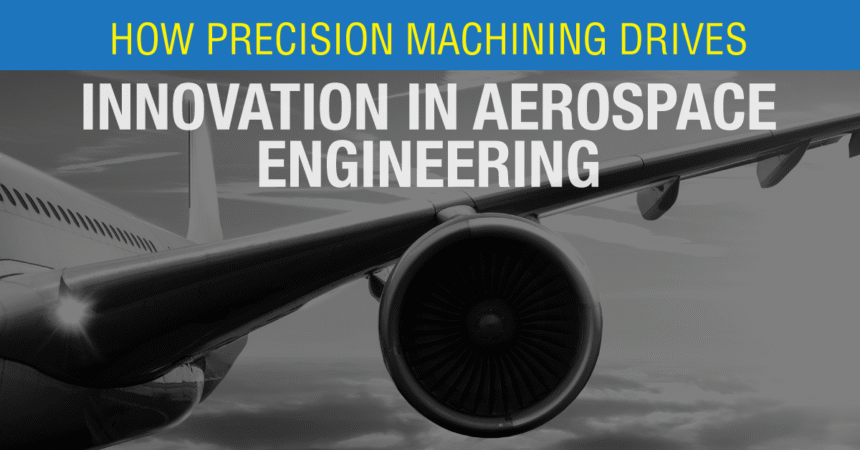Precision machining is critical in aerospace manufacturing, where tolerances as tight as ±0.0001 inches ensure safety, performance, and reliability. Aerospace components, like turbine blades and landing gear, must endure extreme conditions such as high temperatures, pressure, and vibration while maintaining structural integrity. This level of accuracy is essential to prevent catastrophic failure and meet the industry’s strict demands.
Materials That Define Aerospace Excellence
Aerospace components require materials that balance strength, weight, and durability under extreme conditions. The choice of material directly impacts machining strategies, tool selection, and production timelines.
Titanium Alloys
Titanium alloys dominate aerospace applications due to their exceptional strength-to-weight ratio and corrosion resistance. However, machining titanium presents unique challenges. The material’s low thermal conductivity causes heat buildup during cutting, leading to tool wear and potential work hardening. Successful titanium machining requires controlled cutting speeds, flood coolant systems, and specialized carbide or ceramic cutting tools.
Aluminum Alloys
Aircraft-grade aluminum alloys, particularly 2024 and 7075 series, offer excellent machinability while providing the strength needed for structural components. These alloys machine at higher speeds than titanium but require careful attention to prevent work hardening and maintain surface finish quality.
Superalloys
Inconel, Hastelloy, and other superalloys withstand the extreme temperatures found in jet engine hot sections. These materials resist deformation and maintain strength at temperatures exceeding 1,500°F. Machining superalloys demands specialized tooling, reduced cutting speeds, and aggressive cooling strategies to manage the significant heat generation.
Composite Materials
Carbon fiber reinforced polymers and other composite materials require entirely different machining approaches. These materials can delaminate, fray, or experience matrix cracking if machined improperly. Diamond-coated tools and specialized routing techniques help maintain structural integrity while achieving precise dimensions.
Advanced Machining Techniques for Aerospace Applications
Modern aerospace manufacturing relies on sophisticated machining processes that deliver the precision and surface quality demanded by aviation applications.
CNC Milling Operations
Multi-axis CNC milling centers form the heart of aerospace precision machining. Five-axis machines allow simultaneous movement along three linear axes while rotating around two additional axes, enabling the production of complex geometries in single setups. This capability reduces part handling, minimizes tolerance stack-up, and improves surface finish consistency.
Aerospace milling operations often involve removing up to 90% of raw material to create lightweight, hollow structures. High-speed machining techniques, combined with advanced CAM programming, optimize tool paths to minimize vibration and maintain dimensional accuracy throughout these extensive material removal operations.
Precision Turning
CNC turning operations create cylindrical components such as shafts, pins, and aerospace fastener elements with exceptional accuracy. Modern turning centers feature live tooling capabilities, allowing milling operations within the same setup. This integration reduces handling time and maintains tight tolerances across multiple machined features.
Swiss-type lathes excel in producing small, complex aerospace components with length-to-diameter ratios that would challenge conventional turning centers. These machines support the workpiece close to the cutting zone, minimizing deflection and enabling precision machining of intricate details.
Electrical Discharge Machining (EDM)
EDM processes machine complex internal geometries and achieve surface finishes impossible through conventional cutting. Wire EDM creates precise slots, keyways, and complex profiles in hardened materials without inducing mechanical stresses. Sinker EDM produces intricate cooling passages in turbine blades and other critical engine components.
The spark erosion process removes material through controlled electrical discharges, making material hardness irrelevant to the machining process. This capability proves invaluable when working with heat-treated aerospace alloys that resist conventional cutting tools.
Quality Control: Zero-Defect Manufacturing
Aerospace precision machining operates under stringent quality control protocols that ensure every component meets specification requirements. The cost of failure in aerospace applications makes comprehensive inspection and documentation essential.
Dimensional Inspection
Coordinate measuring machines (CMMs) verify component dimensions with accuracy exceeding the machining tolerances themselves. These systems create detailed inspection reports documenting every critical dimension, ensuring traceability throughout the supply chain.
Laser scanning and optical measurement systems provide rapid, non-contact inspection of complex geometries. These technologies detect surface defects, measure profile accuracy, and verify tool mark patterns that could affect component performance.
Surface Quality Assessment
Surface roughness significantly impacts component fatigue life and performance in aerospace applications. Profilometers measure surface texture parameters, ensuring machined surfaces meet specifications for Ra, Rz, and other critical roughness values.
Material Certification
Aerospace machining requires complete material traceability from raw stock through finished components. Mill test certificates, chemical analysis reports, and mechanical property data accompany every material lot, creating an unbroken chain of documentation.
Overcoming Manufacturing Challenges
Aerospace precision machining faces unique challenges that require innovative solutions and continuous process improvement.
Tolerance Management
Aerospace components frequently specify tolerances of ±0.001 inches or tighter across complex three-dimensional surfaces. Achieving these tolerances requires thermal management of both workpiece and machine tool, as temperature variations can cause dimensional changes exceeding the allowable tolerance band.
Sophisticated climate control systems maintain consistent shop floor temperatures, while machine tool thermal compensation algorithms adjust cutting positions based on real-time temperature measurements.
Complex Geometries
Modern aircraft components feature intricate internal passages, thin-wall sections, and complex curved surfaces that challenge conventional machining approaches. Advanced CAM software generates tool paths that maintain constant chip loads while avoiding excessive deflection forces.
Fixturing systems must secure complex parts without inducing distortion while providing access for multi-axis machining operations. Vacuum chucks, custom-designed soft jaws, and modular fixturing components enable secure workholding for even the most challenging geometries.
Tool Life Optimization
Extended machining cycles for complex aerospace components demand predictable tool life to maintain dimensional accuracy and surface finish quality. Tool monitoring systems track cutting forces, vibration levels, and acoustic signatures to predict tool wear before it affects part quality.
Strategic tool replacement schedules balance tool cost against the risk of scrap parts, often favoring conservative approaches given the high value of aerospace materials and finished components.
Conclusion
Aerospace precision machining is advancing through additive manufacturing, AI-driven systems, and hybrid techniques that reduce waste and optimize processes. These innovations improve efficiency, lower costs, and enhance precision to meet the growing demands of aviation manufacturing.









